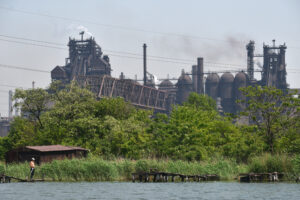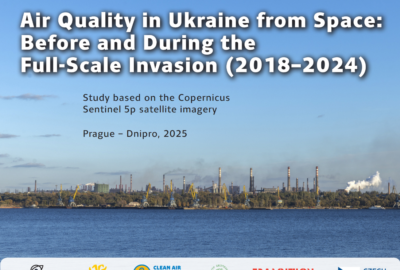Within the framework of the Clean Air for Ukraine project, changes in legislation are being monitored. At its sitting on September 23, the Government approved the draft law “On the Prevention, Reduction, and Control of Industrial Pollution”. The experts from “Stop poisoning Kryvyi Rih” provided comments and suggestions concerning the draft law, and believe that it needs detailed revision, as it is currently a translation of the EU Directive, but insufficiently adapted to the provisions and norms of the current legislation of Ukraine.
The bill aimed to introduce an optimized, transparent, and progressive approach to the control and reduction of industrial pollution. Implementation of the rules of the directive is one of Ukraine’s obligations under the Association Agreement with the EU. It is planned to introduce an integrated permit for large enterprises, which are the biggest polluters of the environment. When an integrated permit is being issued, the impact of the enterprise on the environment as a whole will be taken into account. Emission limit values will be determined on the basis of the findings of the best available techniques and management methods (PATS).
However, the law itself contains a large number of shortcomings and inaccuracies. Here are some of them.
The definitions of terms given in Article 1 do not correspond to those contained in the current legislative and regulatory acts of Ukraine, in part – to the National Classification of Ukraine of economic activities DK 009: 2010.
Article 3 does not include public comments and a report on public hearings among the contents of the register of integrated permits.
Also, judging by the experience of publishing announcements of public discussions and holding hearings during ATS procedures or obtaining Emission Permits, publication in the print media is currently ineffective. After all, the number of their readers and the area they are distributed over do not meet the requirements of the present day; they are not a reliable and modern source of information.
In Part 5 of Article 27 it is necessary to specify what constitutes a “significant threat to the environment or public health” (the extent to which the MPC is exceeded, its duration, the value of pollution indices, etc.), as well as to indicate who determines how significant the threat is. The same applies to the term “significant pollution” contained in the Draft Law.
Article 28 – the frequency of emission monitoring for each individual installation and the location of sampling and measurement points are not set by the permitting authority, but according to current regulations, guidelines, etc. Monitoring should be performed continuously for systematic risk assessment.
In addition, Part 7.8 of this article sets requirements for automated monitoring systems exclusively for combustion plants. But it is necessary to take into account other activities and to unify the article for all activities and all resources (not only gaseous fuels), on the basis of national legislation.
Also, the issue of the reliability of establishing the list and content of pollutants in emissions remained unresolved. It is necessary to provide independent research of qualitative and quantitative indicators of emissions before setting standards and obtaining a unified permit, because, as we know, companies which are polluters and the developers who work with them on a contractual basis hide or do not investigate the actual composition of emissions. This leads to a lack of control and pollution of the surrounding areas, which is the reason for the steady increase in the incidence of illnesses in the population, including cancer. The accumulation of these substances in soils, the sand of playgrounds, and bottom sediments in five large industrial cities of Ukraine was confirmed by last year’s research.
And these are just a few shortcomings of the law.
In our opinion, the draft law “On the Prevention, Reduction, and Control of Industrial Pollution” needs significant refinement. To launch it now, in such a raw form, is unacceptable. Specialists from the public organizations involved in the Clean Air for Ukraine project have submitted a number of proposals to improve the law.







